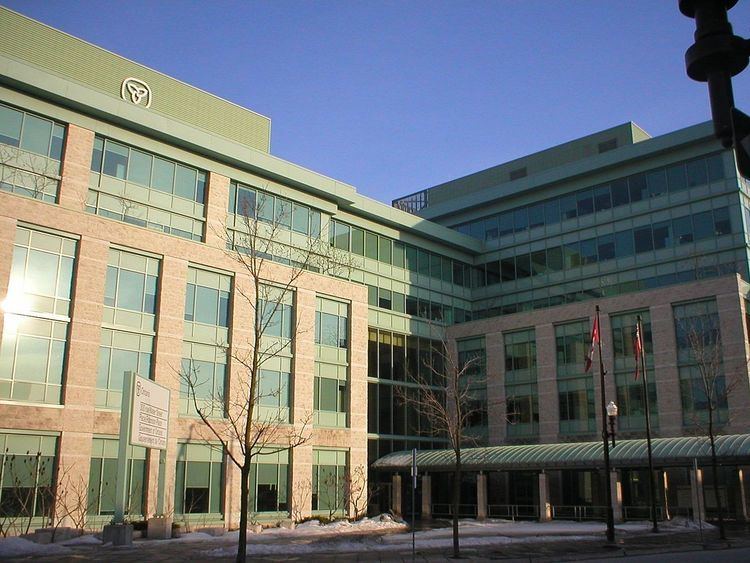Formed 1972 Minister responsible Kathryn McGarry | Headquarters Peterborough | |
 | ||
The Ministry of Natural Resources and Forestry (MNRF) is a government ministry of the Canadian province of Ontario that is responsible for Ontario’s provincial parks, forests, fisheries, wildlife, mineral aggregates and the Crown lands and waters that make up 87 per cent of the province. Its offices are divided into Northwestern, Northeastern and Southern Ontario regions with the main headquarters in Peterborough, Ontario.
Contents
- History
- Organization
- Responsibilities
- Ontario Parks
- Aviation Forest Fire and Emergency Services
- Aircraft on display
- References
The current Ontario Minister of Natural Resources and Forestry is Kathryn McGarry.
History
The first government office was the Office of the Surveyor-General of the Northern District of North America, created in 1763 and initially headed by Samuel Holland. In 1827, this function was taken over by the newly created Commissioner of Crown Lands.
From 1867 to 1972, these responsibilities were conferred on the following Commissioners and Ministers:
From 1970, the Department of Mines became the Department of Mines and Northern Affairs, a predecessor of the current Ministry of Northern Development and Mines. The Department of Lands and Forests became the Ministry of Natural Resources in 1972. From 1995 to 1997 Natural Resources and Northern Development and Mines were under a single super ministry. In 2014 the ministry was renamed Ministry of Natural Resources and Forestry, but responsibilities did not change.
Organization
MNRF is organized into divisions; within each division are branches/regions, sections, and units.
Responsibilities
The Ministry is responsible for:
The ministry also has responsibility for the Office of the Mining & Lands Commissioner and the Niagara Escarpment Commission agencies.
Ontario Parks
Ontario Parks protects significant natural and cultural resources in a system of parks and protected areas.
Aviation, Forest Fire and Emergency Services
The Ministry’s Aviation, Forest Fire and Emergency Services (AFFES) program coordinates forest fire detection, monitoring, suppression and public information and education services for Ontario. AFFES also provides aviation services for the Ontario government and leads emergency management planning and response for natural hazards such as forest fires, floods, erosion, dam failures, unstable soils and bedrock, droughts and oil and gas emergencies.
The Ministry's entrance into the field of aviation started with hiring Laurentide Air Services to carry out fire patrols however the government soon realized it could save money by carrying out the operations itself and formed the Ontario Provincial Air Service, (O.P.A.S.) in February 1924 with 13 second hand Curtiss HS-2L flying boats that had been originally built for the US Navy. The OPAS was an early pioneer in the use of aircraft for the discovery and extinguishing of forest fires. Initially this involved carrying warnings of fires back to existing fire patrols, to be extinguished by teams that travelled by canoe or overland but soon they began landing firefighters (never more than a few at a time due to the limited carrying capacity of the aircraft available) with a hand operated water pump near a fire. As a part of this program the OPAS completely rebuilt damaged aircraft before they began building a number of aircraft under license to meet their requirements such as the Buhl Air Sedan, and later provided considerable input on the development of the de Havilland Canada DHC-2 Beaver and de Havilland Canada DHC-3 Otter and finally were central to the invention of the water bomber. The first water bomber was an OPAS DHC Beaver with a tank mounted on the float designed to dump the water out quickly. This had followed unsuccessful experiments with bags of water.
